Drinking lemon ginger tea can feel so cozy and comforting during the winter months. Not only does it help to keep you warm, but this tea also offers many skin benefits. This version of lemon ginger tea combines an array of beauty-boosting ingredients, including raw honey, fresh ginger, apple cider vinegar, cayenne pepper, and lemon—providing all the essential nutrients your skin needs to thrive. Keep reading to learn more about our Lemon Ginger Tea and how it can help your skin glow from the inside out.
Recipe and photos by Chelsea Rice
Skin Benefits of Lemon Tea
Citrus fruits have long been known for their many therapeutic benefits, which mostly involve vitamins, anti-inflammatories, polyphenols, and other potent antioxidants. Some recent animal studies have demonstrated their anti-aging potential and supportive effects on the microbiome [source]. In fact, lemons have been considered nutraceuticals, having medicinal as well as nutritional benefits [source].
Lemons are rich in vitamin C, a key antioxidant with anti-inflammatory and immune-supporting properties that plays an essential role in skin health. One large lemon contains approximately 44.5mg of vitamin C [source]. The vitamin C Recommended Dietary Allowance for adults is 90 mg for men and 75 mg for women daily. This amount increases to 85 mg during pregnancy and 120 mg for lactation [source].
Vitamin C is most prevalent in the skin, where it has powerful anti-aging activity. It plays a significant role in the production of collagen and the skin’s protective barrier. It counteracts and repairs the oxidative damage produced by environmental stressors. And it also promotes the action of another big player, vitamin E, and they work together to provide the skin with even greater protection from UV light damage [source].
All in all, vitamin C is a powerful nutrient for skin health and can easily be added to your diet by getting lemon and other hefty sources of the vitamin into your meals and beverages. This Lemon Ginger Tea is a perfect example of how simple and tasty increasing your vitamin C intake can be.
Skin Benefits of Ginger Tea
In recent years, several studies have found that ginger has high antioxidant activity and can be effective for protecting the skin against oxidative stress [source]. Oxidative stress is caused by unstable molecules called free radicals and plays a major role in aging, reducing the amount of collagen and elastic fibers in the skin.
These changes lead to the appearance of fine lines and wrinkles [source]. With so many healing properties, ginger tea just might be one of the secret ingredients to help you achieve the healthy, glowing skin you have been seeking.
Benefits of Lemon Ginger Tea
Not only are lemon and ginger powerful and beauty-boosting by themselves, but combining them into a tea brings their healthful properties to a whole new level.
One of the most important parts of keeping your skin healthy is staying hydrated, as the components of skin function best when water is readily available [source]. So drinking tea is a great way to stay hydrated and provide your skin with the nutrients it needs.
Now that you know the benefits of drinking this Lemon Ginger tea, let’s talk about how to make it!
How to Make Lemon Ginger Tea
To make this tea, you will need 6 simple ingredients:
—Raw honey
—Fresh ginger
—Apple cider vinegar
—Cayenne pepper or red pepper flakes
—Lemon
—Hot water
One of the best parts about this recipe is that it can be made in under 10 minutes.
To start, boil a pot of water. Meanwhile, chop the fresh ginger, and then add the ginger, raw honey, apple cider vinegar, lemon juice, and cayenne pepper into a mug.
When the water is hot, pour it over the mixture and stir. Let the water cool slightly. Top with additional lemon slices, and enjoy!
More beauty-boosting tea recipes
- Hibiscus Tea Bombs with Collagen and Pearl Powder
- Ruby Red Skin Glow Tea
- 12 Best Teas for Clear, Glowing Skin
📖 Recipe
Beauty-Boosting Lemon Ginger Tea
Equipment
- Teapot, cutting board, knife, tea mug, spoon
Ingredients
- 1 tablespoon organic raw honey
- 1 teaspoon fresh ginger, chopped
- 1 tablespoon raw, organic apple cider vinegar
- ¼ teaspoon cayenne pepper or red pepper flakes, or to taste
- ½ lemon, juiced
- hot water
Instructions
- Put on a pot of water to boil. While the water heats up, chop up fresh ginger and add into a mug.
- Add raw honey, apple cider vinegar, lemon juice, and cayenne pepper to the mug.
- When the water is ready, pour it over the mixture and stir.
- Wait until it's cool enough to drink but still warm before consuming. If desired, garnish with lemon slices.
References:
1. Shimizu C, et al. Effects of lifelong intake of lemon polyphenols on aging and intestinal microbiome in the senescence-accelerated mouse prone 1 (SAMP1). Sci Rep. 2019.
2. Singh N, et al. Features, pharmacological chemistry, molecular mechanism and health benefits of lemon. MedChem. 2021.
3. FoodData Central: lemons, raw, without peel. U.S. Department of Agriculture website.
4. Vitamin C. National Institutes of Health website.
5. Michalak M, et al. Bioactive compounds for skin health: a review. Nutrients. 2021.
6. Mao QQ, et al. Bioactive compounds and bioactivities of ginger (Zingiber officinale Roscoe). Foods. 2019.
7. Rinnerthaler, M, et al. Oxidative stress in aging human skin. Biomolecules. 2015.
8. Verdier-Sévrain S, et al. Skin hydration: a review on its molecular mechanisms. J Cosmet Dermatol. 2007.
8
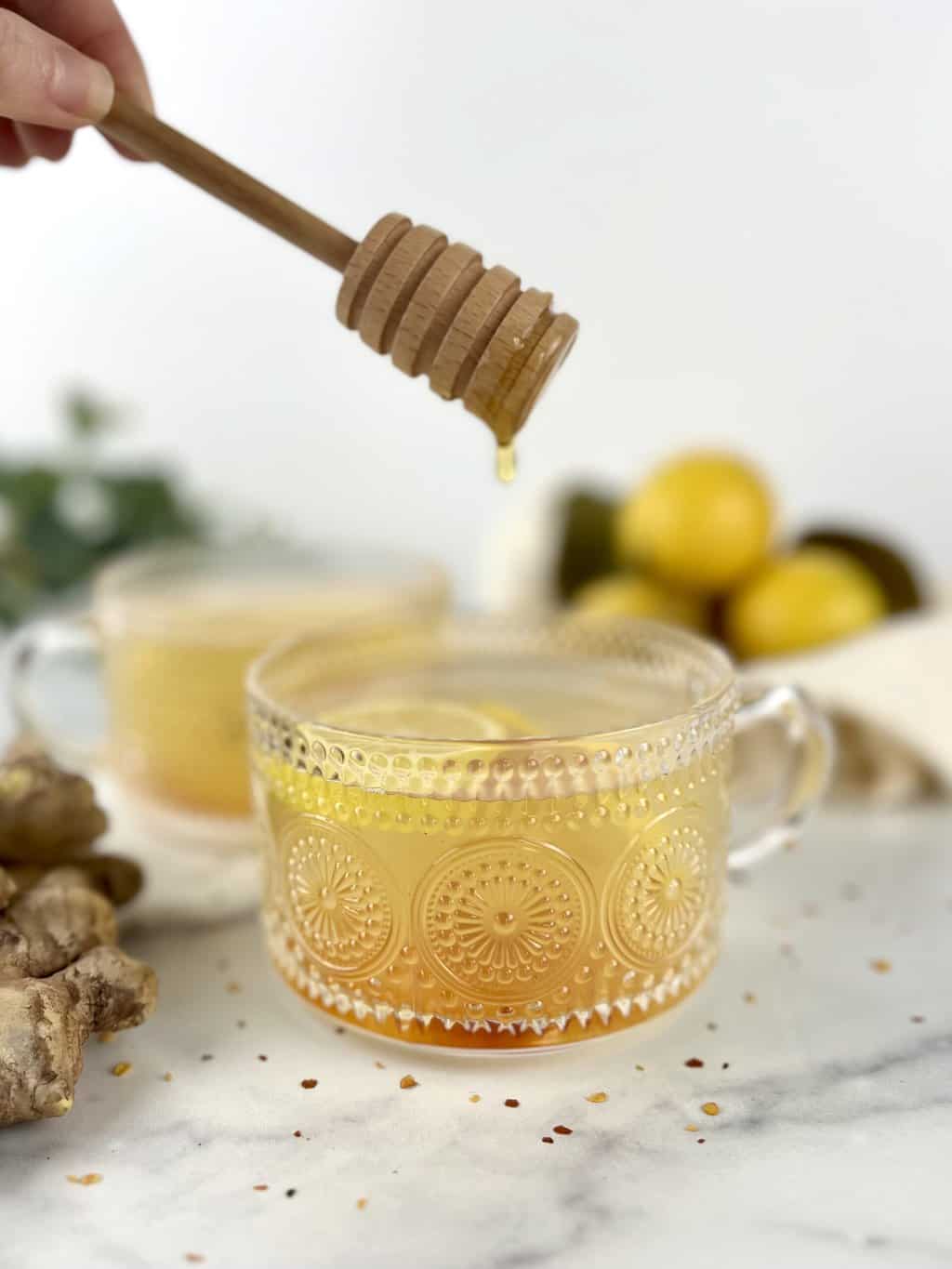
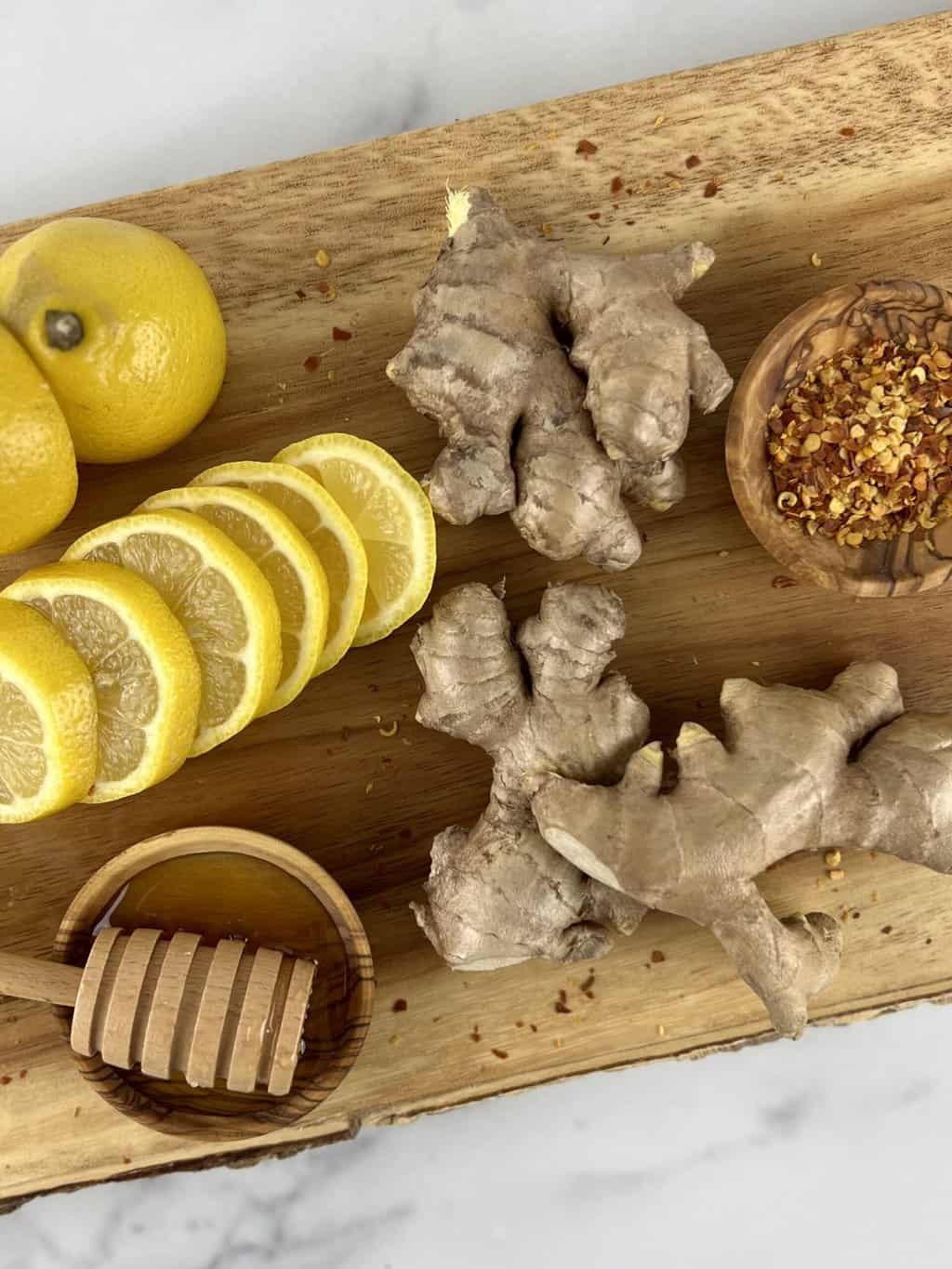
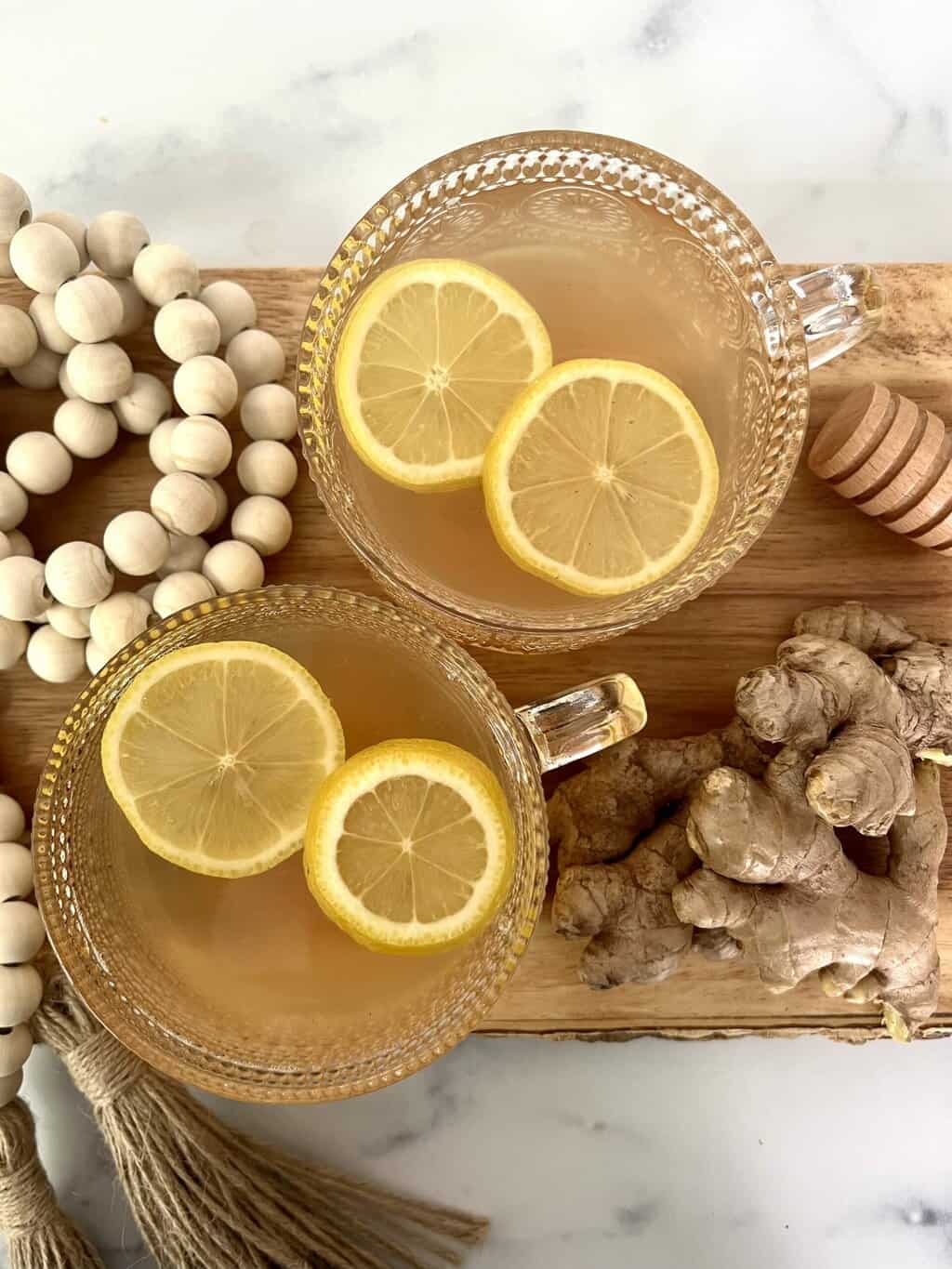
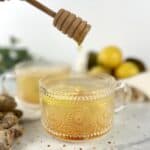



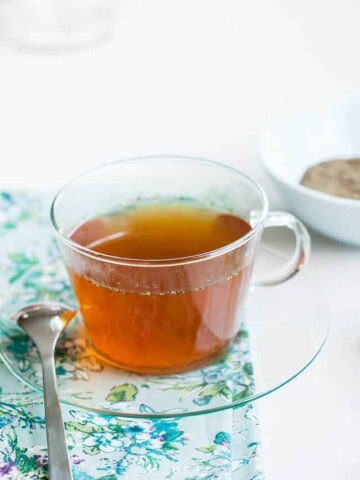
Leave a Comment